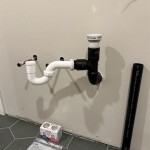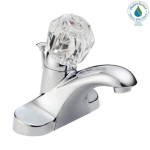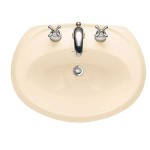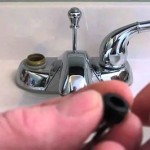48 Inch Bathroom Vanity With Sink On Left: A Comprehensive Guide
The 48-inch bathroom vanity with a sink on the left is a popular choice for homeowners seeking a blend of functionality and space efficiency. This configuration offers a comfortable countertop area while positioning the sink for convenient access, especially in bathrooms with specific layout constraints. Its size makes it suitable for both master bathrooms and larger guest bathrooms, providing ample storage and workspace. Understanding the nuances of selecting the right 48-inch vanity with a left-aligned sink requires careful consideration of various factors, including material, style, storage options, and installation requirements.
This article aims to provide a comprehensive guide to navigating the world of 48-inch bathroom vanities with a sink on the left. It will explore different aspects of these vanities, from the materials used in their construction to the styles that complement various bathroom aesthetics. The information presented will empower readers to make informed decisions when choosing a vanity that meets their specific needs and preferences.
Key Considerations When Choosing a 48-Inch Vanity with a Left Sink
Selecting the appropriate 48-inch bathroom vanity with a left-aligned sink involves several crucial considerations. These factors encompass the material composition of the vanity, the available storage solutions, and the overall style's compatibility with the existing bathroom décor. A detailed examination of each aspect ensures a harmonious and functional addition to the bathroom space.
First, consider the material. Bathroom vanities are constructed from a range of materials, each offering distinct advantages and disadvantages in terms of durability, aesthetics, and maintenance. Solid wood, such as oak or maple, provides a classic and durable option, known for its resistance to moisture and its ability to withstand the rigors of daily use. However, solid wood vanities often come at a higher price point and require proper sealing and maintenance to prevent water damage.
Engineered wood, including plywood and MDF (Medium-Density Fiberboard), presents a more cost-effective alternative. Plywood, composed of multiple layers of wood veneer glued together, offers good stability and moisture resistance, making it suitable for bathroom environments. MDF, on the other hand, is a composite material made from wood fibers and resin. It provides a smooth surface for painting or applying veneers but is generally less resistant to moisture than solid wood or plywood. When choosing an engineered wood vanity, it is essential to ensure that it is properly sealed and finished to prevent water damage and warping.
The sink material is equally important. Options range from porcelain and ceramic to glass, stone, and stainless steel. Porcelain and ceramic sinks are popular choices due to their durability, stain resistance, and ease of cleaning. They are also available in a wide variety of shapes and styles, allowing for seamless integration with various bathroom designs. Glass sinks offer a modern and visually striking aesthetic but may require more frequent cleaning to maintain their pristine appearance. Stone sinks, such as granite or marble, add a touch of luxury and elegance but can be more porous and require sealing to prevent staining. Stainless steel sinks are durable and easy to clean, making them a practical choice for high-traffic bathrooms.
Second, evaluate the storage options. A 48-inch vanity offers ample space for incorporating various storage solutions, including drawers, cabinets, and open shelving. The configuration of these storage elements can significantly impact the functionality and organization of the bathroom. Drawers are ideal for storing smaller items, such as toiletries, makeup, and personal care products. They allow for easy access and prevent items from getting lost in the back of cabinets. Cabinets provide more spacious storage for larger items, such as towels, cleaning supplies, and extra rolls of toilet paper. Open shelving offers a decorative element and can be used to display towels, decorative baskets, or plants, adding visual interest to the bathroom.
Consider the depth and arrangement of the drawers and cabinets to ensure that they can accommodate the intended items. Adjustable shelves offer flexibility in organizing the storage space and can be customized to suit specific needs. Soft-close hinges and drawer slides add a touch of luxury and prevent slamming, extending the lifespan of the vanity. In addition to traditional storage options, some vanities incorporate features such as built-in organizers, pull-out shelves, and electrical outlets for charging devices, further enhancing their functionality.
Third, consider the style and design. The style of the vanity should complement the overall aesthetic of the bathroom. A wide range of styles are available, from traditional and transitional to modern and contemporary. Traditional vanities often feature ornate details, raised panel doors, and antique-inspired hardware. They evoke a sense of elegance and sophistication, making them suitable for classic bathroom designs. Transitional vanities blend traditional and modern elements, offering a versatile option that can adapt to various décor styles. They typically feature clean lines, shaker-style doors, and neutral colors. Modern vanities are characterized by their minimalist design, sleek surfaces, and geometric shapes. They often incorporate features such as floating designs, integrated sinks, and handle-less doors. Contemporary vanities embrace bold colors, unconventional materials, and innovative designs, creating a statement piece in the bathroom.
The finish of the vanity also plays a significant role in its overall appearance. Painted finishes, such as white, gray, and navy, are popular choices for creating a clean and contemporary look. Stained finishes, such as natural wood tones, add warmth and character to the bathroom. Distressed finishes offer a rustic and vintage-inspired aesthetic. The hardware, including knobs and pulls, should complement the style of the vanity and the overall design of the bathroom. Consider the color and material of the hardware to ensure a cohesive and harmonious look.
Exploring Different Styles of 48-Inch Vanities with Left-Aligned Sinks
The availability of diverse styles allows homeowners to select a vanity that seamlessly integrates with their bathroom's existing design or to create a completely new aesthetic. From the timeless elegance of traditional vanities to the sleek minimalism of modern designs, the options are vast and varied. Examining these different styles helps in making a choice that reflects personal taste and enhances the bathroom's overall appeal.
Traditional vanities are recognized for their intricate detailing, often featuring raised panel doors, decorative moldings, and ornate hardware. These vanities exude a sense of formality and sophistication, making them ideal for bathrooms with a classic or vintage-inspired design. The materials used in traditional vanities often include solid wood, such as oak or cherry, with a rich stained finish to highlight the wood grain. Countertops are typically made of marble or granite, adding to the luxurious feel. A 48-inch traditional vanity with a left-aligned sink provides ample storage space behind the cabinet doors and in the drawers, allowing for organized storage of toiletries and bath essentials.
Modern vanities, in contrast, prioritize clean lines, minimalist design, and functionality. They often feature flat-panel doors, simple hardware, and geometric shapes. The materials used in modern vanities can include engineered wood, such as MDF or plywood, with a sleek painted finish or a high-gloss lacquer. Countertops are frequently made of quartz, solid surface materials, or glass, creating a seamless and contemporary look. A 48-inch modern vanity with a left-aligned sink may incorporate features such as floating designs, integrated sinks, and handle-less doors, further enhancing its minimalist aesthetic. Storage is often maximized through the use of drawers and pull-out shelves, providing easy access to items while maintaining a clutter-free environment.
Transitional vanities bridge the gap between traditional and modern styles, offering a versatile option that can adapt to various bathroom designs. They typically feature shaker-style doors, clean lines, and neutral colors. The materials used in transitional vanities can include a combination of solid wood and engineered wood, with a painted or stained finish. Countertops may be made of granite, quartz, or marble, depending on the desired aesthetic. A 48-inch transitional vanity with a left-aligned sink provides a balance of functionality and style, offering ample storage space and a timeless look that complements a wide range of bathroom décor.
Rustic vanities bring a touch of warmth and character to the bathroom, featuring distressed finishes, reclaimed wood, and vintage-inspired hardware. These vanities evoke a sense of history and charm, making them ideal for bathrooms with a farmhouse or cottage-style design. The materials used in rustic vanities often include reclaimed wood, solid wood with a distressed finish, and metal accents. Countertops may be made of concrete, wood, or stone, adding to the rustic appeal. A 48-inch rustic vanity with a left-aligned sink may incorporate features such as exposed pipes, barn-door style doors, and vintage-inspired hardware, further enhancing its rustic aesthetic. Storage is often provided through open shelving and simple cabinets, allowing for a display of decorative items and a relaxed, informal feel.
Installation and Maintenance of a 48-Inch Vanity with a Left Sink
Proper installation is crucial for ensuring the longevity and functionality of a 48-inch vanity. Whether performed by a professional or a skilled homeowner, the installation process requires careful attention to detail and adherence to specific guidelines. Furthermore, regular maintenance is essential for preserving the vanity's appearance and preventing damage from moisture and everyday wear and tear.
The installation process typically begins with the removal of the old vanity, if applicable. This involves disconnecting the plumbing, including the water supply lines and drainpipe, and carefully removing the existing vanity from the wall. Before installing the new vanity, it is essential to ensure that the wall is level and plumb. Shims may be used to correct any imperfections and ensure that the vanity sits flush against the wall. The vanity is then secured to the wall using screws or bolts, depending on the type of wall and the weight of the vanity. The plumbing connections are then re-established, ensuring that all connections are tight and leak-free. Finally, the countertop and sink are installed according to the manufacturer's instructions.
For homeowners who are not comfortable with plumbing or carpentry, it is recommended to hire a professional installer. A professional installer has the expertise and tools necessary to ensure that the vanity is installed correctly and safely. They can also address any unforeseen issues that may arise during the installation process. The cost of professional installation can vary depending on the complexity of the project and the location of the homeowner.
Regular maintenance is essential for preserving the appearance and functionality of the vanity. This includes wiping down the countertop and sink after each use to prevent water spots and stains. Cleaning the vanity regularly with a mild soap and water solution can help to remove dirt and grime. Avoid using harsh chemicals or abrasive cleaners, as these can damage the finish of the vanity. Periodically inspecting the plumbing connections for leaks can help to prevent water damage. Tightening any loose connections can help to prevent leaks from occurring. Applying a sealant to the countertop and sink can help to protect them from staining and water damage. Following the manufacturer's instructions for cleaning and maintenance can help to extend the lifespan of the vanity.
To prevent water damage, it is essential to address any leaks promptly. Leaks can cause significant damage to the vanity and the surrounding area, leading to costly repairs. If a leak is detected, turn off the water supply to the vanity and repair the leak as soon as possible. Use a waterproof sealant to seal any cracks or gaps in the vanity to prevent water from penetrating the wood. Consider using a dehumidifier in the bathroom to reduce humidity levels and prevent mold and mildew growth. Regularly ventilating the bathroom by opening a window or using a ventilation fan can also help to reduce humidity levels.

Left Bathroom Vanities With Tops At Com

Bellaterra Home Vista 48 In W X 22 D 36 H Single Vanity Natural With Marble Top White Left Basin 6001l Nl Jw The Depot

Allen Roth Felix 48 In Vintage Gray Undermount Single Sink Bathroom Vanity With White Engineered Stone Top The Vanities Tops Department At Com

Home Decorators Collection Sandon 48 In W X 22 D 34 H Single Sink Bath Vanity White With Carrara Marble Top 48w The Depot

48 Off Centered Right Left Basin Vanity Set In White With Black Granite Top Gold Hardware

Bellaterra Home 48 In W X 22 D 36 H Single Vanity Rustic Wood With Jazz White Marble Top Left Side Basin 6001l Rw Jw The Depot

Left Bathroom Vanities With Tops At Com

Home Decorators Collection Sandon 48 In W X 22 D 34 H Single Sink Bath Vanity White With Carrara Marble Top 48w The Depot

Allen Roth Moravia 48 In White Undermount Single Sink Bathroom Vanity With Natural Carrara Marble Top At Com

Left Offset Bathroom Vanity Vanities Without Tops Small
Related Posts







